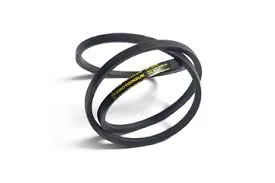- Arabic
- French
- Russian
- Spanish
- Portuguese
- Turkish
- Armenian
- English
- Albanian
- Amharic
- Azerbaijani
- Basque
- Belarusian
- Bengali
- Bosnian
- Bulgarian
- Catalan
- Cebuano
- Corsican
- Croatian
- Czech
- Danish
- Dutch
- Afrikaans
- Esperanto
- Estonian
- Finnish
- Frisian
- Galician
- Georgian
- German
- Greek
- Gujarati
- Haitian Creole
- hausa
- hawaiian
- Hebrew
- Hindi
- Miao
- Hungarian
- Icelandic
- igbo
- Indonesian
- irish
- Italian
- Japanese
- Javanese
- Kannada
- kazakh
- Khmer
- Rwandese
- Korean
- Kurdish
- Kyrgyz
- Lao
- Latin
- Latvian
- Lithuanian
- Luxembourgish
- Macedonian
- Malgashi
- Malay
- Malayalam
- Maltese
- Maori
- Marathi
- Mongolian
- Myanmar
- Nepali
- Norwegian
- Norwegian
- Occitan
- Pashto
- Persian
- Polish
- Punjabi
- Romanian
- Samoan
- Scottish Gaelic
- Serbian
- Sesotho
- Shona
- Sindhi
- Sinhala
- Slovak
- Slovenian
- Somali
- Sundanese
- Swahili
- Swedish
- Tagalog
- Tajik
- Tamil
- Tatar
- Telugu
- Thai
- Turkmen
- Ukrainian
- Urdu
- Uighur
- Uzbek
- Vietnamese
- Welsh
- Bantu
- Yiddish
- Yoruba
- Zulu
Oct . 30, 2024 14:04 Back to list
automotive belts
Understanding Automotive Belts Essential Components for Vehicle Performance
Automotive belts are integral components of modern vehicles, playing a crucial role in the overall performance and functionality of the engine. They are designed to transmit power between various engine components, ensuring that everything runs smoothly. Among the different types of belts utilized in automobiles, the most common include the serpentine belt, timing belt, and V-belt. Each of these belts serves a specific function and is vital for the optimal operation of the vehicle.
Serpentine Belts
The serpentine belt is a single, continuous belt that connects multiple components of the engine, such as the alternator, power steering pump, water pump, and air conditioning compressor. It allows for a more efficient transfer of power from the engine's crankshaft to these components. One of the significant advantages of the serpentine belt is its design, which takes up less space and is easier to install compared to multiple individual belts. Generally made of rubber with nylon reinforcement for added durability, serpentine belts can last from 50,000 to 100,000 miles, depending on driving conditions and maintenance.
Timing Belts
automotive belts

The timing belt is an essential component that synchronizes the rotation of the engine's crankshaft and camshaft(s). This synchronization is critical for maintaining the proper timing of the engine's valves, ensuring they open and close at the right moments during the combustion cycle. Unlike the serpentine belt, which is located on the exterior of the engine, the timing belt is usually housed within the engine cover. Timing belts are typically made from a mix of rubber and reinforced materials, allowing them to withstand the high temperatures and pressures generated within the engine. Regular maintenance and replacement of the timing belt—every 60,000 to 100,000 miles—are crucial, as a failed timing belt can lead to severe engine damage.
V-Belts
V-belts were the standard in older vehicles and are still found in many applications today. These belts are named for their distinctive V-shaped cross-section, which allows for a better grip on the pulleys. V-belts are typically found in older models or specific applications where the serpentine design is not feasible. While they are less common in modern vehicles, they are essential for those that still utilize them, functioning similarly by transmitting power to various engine accessories.
Conclusion
In summary, automotive belts are vital for the operation of an engine, with each type serving its unique function to ensure vehicle efficiency. Regular inspection and maintenance of these belts can prevent breakdowns and ensure the engine operates smoothly. Vehicle owners should be aware of the specifics regarding their vehicle's belts, including replacement intervals and symptoms of wear, such as squeaking noises or visible cracks. By paying attention to these components, drivers can enhance their vehicle's performance and longevity, ultimately leading to a safer and more reliable driving experience.
-
Korean Auto Parts Timing Belt 24312-37500 For Hyundai/Kia
NewsMar.07,2025
-
7PK2300 90916-T2024 RIBBED BELT POLY V BELT PK BELT
NewsMar.07,2025
-
Chinese Auto Belt Factory 310-2M-22 For BMW/Mercedes-Benz
NewsMar.07,2025
-
Chinese Auto Belt Factory 310-2M-22 For BMW/Mercedes-Benz
NewsMar.07,2025
-
90916-02660 PK Belt 6PK1680 For Toyota
NewsMar.07,2025
-
drive belt serpentine belt
NewsMar.07,2025

